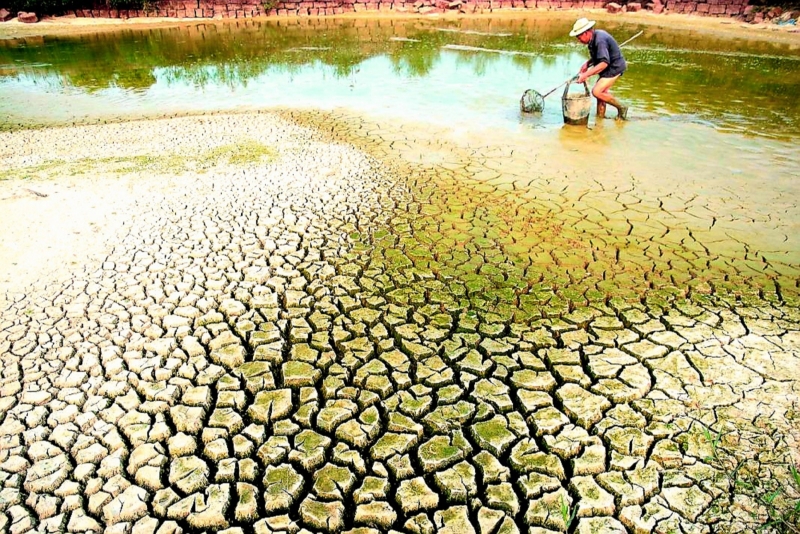The Mekong Delta boasts a coastline stretching nearly 700 km, passing through Can Tho city and the provinces of Dong Thap, Vinh Long, Ca Mau, and An Giang and covering more than 360,000 sq km of sea. Experts have said that with sustainable management, these natural advantages could lay the foundation for a “blue economy” in the Delta that balances economic growth with ecological conservation.
For a greener delta
Sustainable aquaculture is seen as a “green spearhead” in the Mekong Delta’s development strategy, in line with the broader shift towards a greener economy. In this green transition, local provinces hold clear advantages: they are the country’s largest agricultural hub, with high forest coverage and relatively few polluting factories. The region is also home to several valuable biosphere reserves, providing favorable conditions for sustainable growth.
Known as Vietnam’s “shrimp capital”, the Delta contributes more than 80 per cent of the country’s shrimp export value. Yet intensive shrimp farming in the past placed major pressure on the environment, causing water pollution, widespread disease, and the loss of mangrove forests.
A new trend is taking shape - circular aquaculture - combining shrimp farming with mangrove protection or integrating multiple species to reduce ecological risks. In Ca Mau, several enterprises have adopted internationally-certified “shrimp-forest” models, earning labels such as ASC (Aquaculture Stewardship Council) and Naturland (an organic standard from Germany). These approaches not only raise product value but also help safeguard the environment.
In particular, Ca Mau has more than 280,000 ha of shrimp farms, accounting for about 40 per cent of Vietnam’s total farmed shrimp output. Building on this strength, the province has charted a path towards green and ecological agriculture, prioritizing resource conservation and sustainable use.
The shrimp-mangrove model is a notable example of balancing economic growth with ecosystem protection. Farmers are required to preserve at least 40 per cent of natural forest, while the rest is used for shrimp ponds managed in a natural way, with minimal chemicals and industrial feed. As a result, Ca Mau shrimp has secured prestigious certifications such as ASC, EU Organic, and Naturland, helping expand exports to Europe, the US, and Japan. In parallel, the rice-shrimp rotation model has also proved highly effective.
Beyond shrimp, pangasius (catfish) farming is being encouraged under green standards. Processing plants are increasingly turning fish by-products into fish oil, fish meal, and even raw materials for pharmaceuticals and cosmetics. These initiatives fit well with the circular economy and help reduce emissions.
Winds of change
Massive wind turbines in Ca Mau and Can Tho city have become symbols of the Delta’s green transition. Studies show that coastal waters enjoy average wind speeds of 6.5-7.5 meters per second, among the highest in Vietnam and making it an ideal location to create a “national wind power hub”.
Offshore wind power is also seen as a spearhead industry with the potential to reshape the Mekong Delta. By 2025, dozens of wind power projects have already gone into operation in Vinh Long, Can Tho, and Ca Mau, with a combined capacity of several thousand megawatts. Still, the true potential is many times greater, especially as the government targets around 7 GW of offshore wind by 2030.
Beyond producing clean energy, wind power also attracts foreign investment and helps build a supporting industrial chain. Experts believe that with consistent policies, the Mekong Delta could become Vietnam’s “wind energy powerhouse”, even supplying electricity for export through regional grid connections.
The newly-expanded Ca Mau province is particularly well positioned, with a long coastline and strong year-round winds. Several nearshore wind projects have recently been commissioned, including the Tan Thuan and Khai Long plants, providing a clean energy boost for the Delta.
In addition to nearshore projects, large-scale offshore wind farms have been mapped out and are expected to generate fresh momentum for development, attract investment, and create local jobs. Rooftop solar is also being encouraged, particularly among households, farms, and production facilities. Tapping into solar power not only lowers electricity costs but also supports Vietnam’s broader goal of reducing greenhouse gas emissions.
Promise and pressure
Beyond energy and seafood, the green economy also opens new opportunities for ecotourism. Phu Quoc Island, off the coast of An Giang province, Con Dao Island (now part of Ho Chi Minh City), and Ca Mau Cape count among destinations with significant potential. The growing trend of sustainable, eco-friendly travel is increasingly attracting international visitors.
Homestays linked with mangrove forests, tours offering a hands-on experience of traditional fishing, and bird-watching excursions are examples of offerings that could generate stable incomes while preserving natural heritage.
Experts argue that with proper investment in infrastructure and human resources, marine ecotourism may become an important piece of the blue economy puzzle, helping diversify livelihoods for coastal communities.
Yet despite its vast potential and opportunities, developing a blue economy in the Mekong Delta still faces major challenges. For example, power transmission infrastructure remains weak and unable to keep pace with the boom in renewable energy, as many wind power projects struggle with electricity pricing mechanisms, investment capital, and marine spatial planning. At the same time, sustainable aquaculture requires high upfront costs, making it difficult for smallholder farmers to be part of plans.
Another issue, now increasingly evident, is conflict of interest. The expansion of seaports and coastal industrial parks risks encroaching upon ecological space, shrinking mangrove forests that serve as a vital natural buffer for ecosystems.
In addition, the shortage of skilled human resources in renewable energy and marine resource management falls short of requirements at large-scale projects and remains a bottleneck.
Building a blue future
To overcome such challenges, experts emphasize the need for a regionally-coordinated blue economy strategy. Coastal provinces in the Mekong Delta cannot develop in isolation; they must work together on marine spatial planning, port systems, power grids, and supply chains.
At the same time, green finance is a crucial driver. To meet goals, it is essential to mobilize funding from international climate funds, official development assistance (ODA), and FDI in renewable energy and high-tech marine farming.
International cooperation is also a strategic pathway for sustainable development. Countries such as Denmark, Norway, and the Netherlands are ready to share their experience in offshore wind power, fisheries management, and circular aquaculture.
According to experts, if these opportunities are harnessed effectively, the Mekong Delta can not only attract investment but also upgrade technology, develop skilled human resources, and accelerate the growth of its blue economy while protecting the environment.
The blue economy is not just a slogan but a strategic solution for the Mekong Delta to adapt to climate change while opening new avenues of growth. From wind farms and shrimp ponds to mangrove forests and coastal ecotourism, a new economic ecosystem is taking shape, one that balances development with conservation.









 Google translate
Google translate